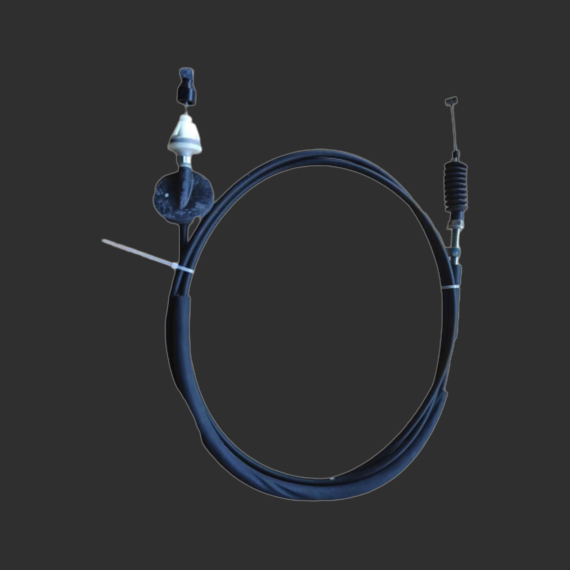How to Adjust Your Hand Brake Cable for Optimal Performance
Understanding the Hand Brake Cable Adjuster Essential for Vehicle Safety
The hand brake, also known as the emergency brake or parking brake, is a crucial component of every vehicle. It is designed to keep the car stationary when parked and provides an additional safety measure in case of a primary brake system failure. One of the essential parts of the hand brake system is the hand brake cable adjuster. In this article, we will delve into the importance of the hand brake cable adjuster, how it works, and the maintenance required to ensure optimal performance.
What is a Hand Brake Cable Adjuster?
The hand brake cable adjuster is a device used to regulate the tension of the hand brake cables in a vehicle. The hand brake operates through a system of cables that connect from the hand lever inside the vehicle to the brake assemblies on the rear wheels. Over time, these cables can stretch or wear out, leading to inadequate braking performance. The adjuster allows for fine-tuning of the cable tension, ensuring that the hand brake functions effectively.
Importance of Proper Adjustment
A properly adjusted hand brake is vital for several reasons. Firstly, it ensures that the vehicle can be securely parked, particularly on inclines where a malfunctioning hand brake could lead to rollaways. Secondly, an improperly adjusted hand brake can lead to increased wear on the brake components and potentially compromise the effectiveness of the primary braking system. Additionally, a loose hand brake may not engage the brakes fully, leading to longer stopping distances, which can pose serious safety risks on the road.
How to Identify Adjustment Needs
There are several indicators that your hand brake cable might need adjustment
hand brake cable adjuster

1. High Lever Travel If it takes an excessive amount of pull on the hand brake lever to engage the brakes, it is a clear sign that the cables are either worn out or too loose. 2. Ineffective Braking If the vehicle rolls slightly when the hand brake is engaged, this indicates that the tension is insufficient. 3. Audible Noises Strange sounds or creaking when the hand brake is applied can suggest that the cables are fraying or misaligned, requiring immediate attention.
Adjusting the Hand Brake Cable
Adjusting the hand brake cable is a maintenance task that can often be performed by vehicle owners, though some may prefer the assistance of a professional mechanic. Here’s a simple guide on how to make this adjustment
1. Locate the Adjuster The adjuster is generally located between the left and right rear wheels, at the mid-point of the vehicle undercarriage. 2. Check the Tension Before making any adjustments, check the current tension by pulling the hand brake lever. If it travels more than a few clicks, it likely needs adjustment. 3. Tune the Adjuster Using the appropriate tools, turn the adjuster to increase the tension. Typically, turning clockwise will tighten the cable, while turning it counter-clockwise will loosen it. 4. Test the Brake Lever After adjusting, test the hand brake lever until it engages comfortably within a few clicks. The vehicle should remain stationary when the brake is applied.
Regular Maintenance
Regular maintenance of the hand brake system is essential for ensuring it remains operational. Checking the cable adjusters as part of routine vehicle inspections can prevent serious issues down the line. Inspect the cables for signs of wear, fraying, or corrosion, and replace them if necessary. Lubricating the cable can also extend its lifespan and improve performance.
Conclusion
The hand brake cable adjuster plays a vital role in the safety and functionality of a vehicle's hand brake system. Regular checks and adjustments ensure that the hand brake operates effectively, safeguarding against potential accidents and enhancing overall vehicle performance. Whether you choose to perform these adjustments yourself or seek professional assistance, understanding the importance of the hand brake cable adjuster is key to responsible vehicle ownership and automotive safety. By keeping this component in optimal condition, you can drive with greater confidence, knowing that your vehicle will remain securely parked and responsive when needed.
-
Workings of Clutch Pipe and Hose SystemsNewsJun.04,2025
-
The Inner Workings of Hand Brake Cable SystemsNewsJun.04,2025
-
The Secrets of Throttle and Accelerator CablesNewsJun.04,2025
-
The Hidden Lifeline of Your Transmission Gear Shift CablesNewsJun.04,2025
-
Demystifying Gear Cables and Shift LinkagesNewsJun.04,2025
-
Decoding Clutch Line Systems A Comprehensive GuideNewsJun.04,2025
